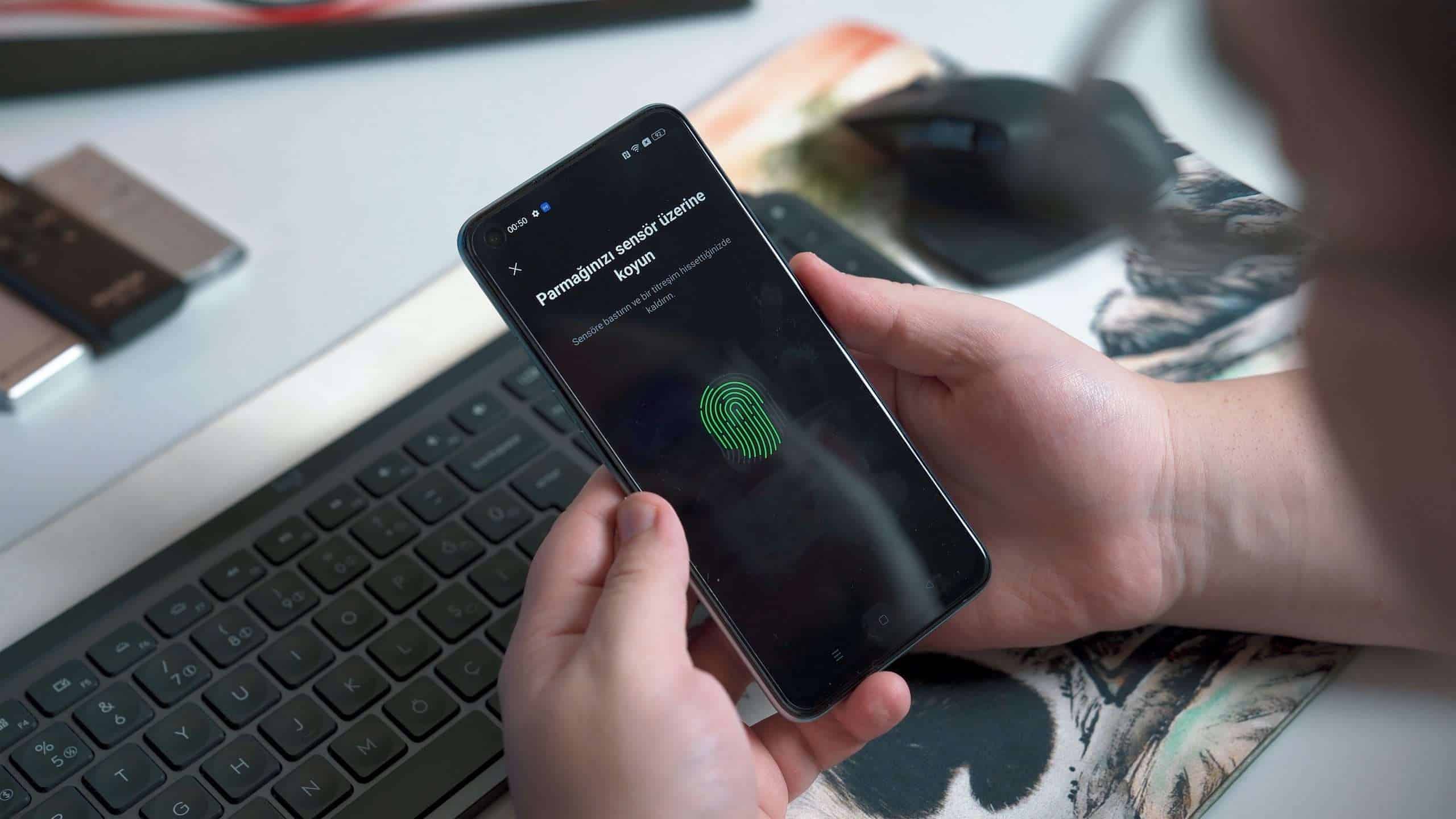Mobile devices are essential for staying connected to the world. We use them to keep in touch with family and friends, manage daily tasks, and secure our personal information. However, with this convenience comes the need to protect our devices from security threats. These gadgets store valuable personal and financial data, so it’s important to keep that information safe.
This article offers simple tips to improve your mobile device security. You can use strong passwords and biometric features, be careful with public Wi-Fi, and manage app permissions wisely. It also includes a helpful table that summarizes these tips for quick reference. By following these recommendations and staying alert, you can lower the risk of your mobile device being compromised and protect your sensitive information.
Protecting Your Pocket Computer: Essential Mobile Device Security Tips
Our mobile devices hold a lot of personal information. Keeping them secure is crucial to protect our privacy and prevent data breaches. Here are some essential tips to enhance your mobile device security.
Strong Passwords and Biometrics
Use a strong, unique password or PIN to lock your device. A strong password should be at least 8 characters long and include a mix of uppercase and lowercase letters, numbers, and symbols. Consider using biometric authentication, such as fingerprint scanning or facial recognition, for an added layer of security.
Update Your Software
Keep your device’s operating system and apps updated to the latest versions. Software updates often include security patches that address vulnerabilities and protect against malware.
Beware of Public Wi-Fi
Avoid using public Wi-Fi networks whenever possible. These networks are often unsecured, making your data vulnerable to interception by hackers. If you must use public Wi-Fi, consider using a virtual private network (VPN) to encrypt your internet traffic.
Download Apps from Trusted Sources
Only download apps from official app stores, such as the Apple App Store or Google Play Store. These stores have security measures in place to screen apps for malware and other threats.
Enable Find My Device
Turn on the “Find My Device” feature on your phone. This allows you to locate, lock, or erase your device remotely if it’s lost or stolen.
Be Cautious with Links and Attachments
Don’t click on links or open attachments in emails or messages from unknown senders. These could contain malware or phishing attempts to steal your information.
Review App Permissions
Pay attention to the permissions that apps request. Only grant necessary permissions and be wary of apps that ask for excessive access to your data.
Use a Security App
Consider installing a reputable security app on your device. These apps can provide additional protection against malware, phishing attacks, and other threats.
Mobile Device Security Tips Table
| Tip | Description |
|---|---|
| Strong Passwords and Biometrics | Use strong passwords and biometric authentication to lock your device. |
| Update Your Software | Keep your operating system and apps updated to the latest versions. |
| Beware of Public Wi-Fi | Avoid using public Wi-Fi or use a VPN to encrypt your internet traffic. |
| Download Apps from Trusted Sources | Only download apps from official app stores like the Apple App Store or Google Play Store. |
| Enable Find My Device | Turn on “Find My Device” to locate, lock, or erase your device remotely if it’s lost or stolen. |
| Be Cautious with Links and Attachments | Don’t click on links or open attachments from unknown senders. |
| Review App Permissions | Pay attention to the permissions that apps request and only grant necessary access. |
| Use a Security App | Install a security app for additional protection against malware and other threats. |
Two-Factor Authentication: An Extra Layer of Security
Two-factor authentication (2FA) adds an extra layer of security to your online accounts by requiring a second form of verification in addition to your password. This second factor is usually a code sent to your phone or another trusted device. Enabling 2FA on your important accounts, such as email, banking, and social media, can significantly reduce the risk of unauthorized access.
Protecting Your Information in a Mobile World
Mobile devices like smartphones and tablets are wonderful tools. They let us stay connected, get work done, and have fun while on the go. However, it’s important to remember that these devices hold a lot of sensitive information about us. That makes them a target for hackers and thieves.
Here’s a look at some essential steps you can take to keep your data secure:
1. Start With the Basics
- Always use a passcode or screen lock. A strong passcode (or even better, a fingerprint or facial recognition) makes it much harder for anyone to access your device if it’s lost or stolen.
- Keep your devices updated. Software updates often patch security holes. They are your first line of defense against new threats.
- Be very careful about app permissions. Some apps ask for way more access than they need. Before granting permissions, think carefully about whether the app really needs access to your location, contacts, etc.
2. Be Cautious Online
- Stick to familiar Wi-Fi networks. Public Wi-Fi is convenient, but it’s often not secure. Hackers can easily intercept data sent over these networks. If you have to use public Wi-Fi, a VPN (virtual private network) is a good investment.
- Be wary of what you click. Hackers use phishing links in emails, texts, even social media posts, to trick you into giving up information or installing malware.
3. Proactive Security Measures
- Use mobile security software. Antivirus and anti-theft apps provide an extra layer of protection for your devices.
- Enable remote wipe. If your device is lost or stolen, you can remotely delete all of its data to keep it from falling into the wrong hands.
4. Back Up Your Data Regularly
Accidents happen! Regularly backing up your data ensures that you won’t lose important files if your device is lost, stolen, or damaged. Many phones and tablets can back up to the cloud automatically.
Mobile Device Security Best Practices
| Practice | Description |
|---|---|
| Strong Password/Passcode | Use a strong password or better yet, biometrics. |
| Software Updates | Install software updates as they are released. |
| App Permissions | Think carefully before granting app permissions. |
| Secure Wi-Fi | Use trusted Wi-Fi or a VPN on public networks. |
| Antivirus/Anti-theft | Install security apps for an extra layer of defense. |
| Remote Wipe | Enable remote wipe for lost or stolen devices. |
| Regular Backups | Back up data frequently to avoid permanent loss. |
By following these tips, you can significantly reduce the risk of having your personal information fall into the wrong hands!
Mobile Device Security
| Aspect | Description |
|---|---|
| Device Encryption | Encrypting your device’s storage ensures that even if it’s lost or stolen, your data remains unreadable without the decryption key. Most modern mobile devices offer built-in encryption, so be sure to enable it. |
| Strong Passwords and PINs | Don’t use weak or easily guessable passwords or PINs to unlock your device. Use a combination of letters, numbers, and symbols, and avoid using personal information like birthdays or pet names. |
| Multi-Factor Authentication (MFA) | Adding an extra layer of security with MFA requires not just your password, but also another factor like a fingerprint, code from an authenticator app, or a security question. |
| Keep Software Updated | Software updates often include security patches that fix vulnerabilities hackers can exploit. Update your operating system, apps, and firmware regularly. |
| Download Apps Only from Trusted Sources | Avoid downloading apps from untrusted sources like third-party app stores or unknown websites. Stick to official app stores like Google Play Store or Apple App Store. |
| Be Wary of Phishing | Phishing scams try to trick you into clicking on malicious links or entering your personal information. Be cautious of emails, texts, or social media messages that seem suspicious, even if they appear to be from a legitimate source. |
| Use a Mobile Security App | Consider using a mobile security app that can scan for malware, block malicious websites, and help you find your lost or stolen device. |
| Be Mindful of Public Wi-Fi | Public Wi-Fi networks are often unsecured, so avoid accessing sensitive information or making online payments while connected to them. If you must use public Wi-Fi, consider using a VPN for added security. |
| Regularly Back Up Your Data | Regularly backing up your data to the cloud or an external storage device ensures you don’t lose important information if your device is lost, stolen, or damaged. |
What Makes Mobile Device Security Crucial?
Mobile Security: More Than Just a Tech Term
Think about this: your mobile device knows you better than your best friend. It holds your secrets, your plans, and even your location at any given time. It’s no surprise that keeping this information safe is paramount. Mobile security isn’t just a tech term; it’s about safeguarding your digital identity.
The Ever-Present Threats
Phishing: The Deceptive Dangers
Phishing attacks, where scammers trick you into revealing personal information, are the top threat to mobile security. They often come disguised as legitimate emails or texts, luring you into a trap. It’s like a digital masquerade ball where everyone’s wearing a disguise, but not in a fun way.
Malware & Ransomware: The Hidden Hazards
Your mobile device could be under attack without you even knowing it. Malware and ransomware hide in seemingly innocent apps or links, waiting to strike. They can disrupt your device or hold your data hostage. Think of it as a digital thief lurking in the shadows.
Unsecured Wi-Fi: The Invisible Enemy
Using public Wi-Fi is like having a conversation in a crowded room; you never know who’s listening. Without proper security, like a VPN, using public Wi-Fi can expose your device to cyber-attacks.

The IBM Perspective
IBM stresses the importance of comprehensive mobile security. Their insights reveal that one-third of surveyed professionals experienced a mobile security compromise. The study shows that the consequences are not just technical but also include costly and time-consuming remediation.
BYOD: A Double-Edged Sword
Bring-Your-Own-Device (BYOD) policies in workplaces offer flexibility but also open doors to security risks. Personal devices may lack the necessary security measures, making them easy targets for cybercriminals.
Building a Fort of Security
Regular Updates: The First Line of Defense
Keeping your operating system and apps updated is crucial. These updates often include patches for security vulnerabilities. It’s like fixing a hole in your fence before intruders find it.
Smart App Management: Choose Wisely
Not all apps are created equal. Some ask for more permissions than needed, posing a risk to your data privacy. It’s essential to review app permissions critically – think of it as choosing who to trust with your house keys.
The Power of Passwords: Your Digital Locks
Strong, unique passwords are your first defense against unauthorized access. Using a variety of characters and avoiding obvious choices makes your digital locks harder to pick.
Real-World Applications: Beyond Theory
Imagine losing all your photos because of a ransomware attack or having your personal information stolen through a phishing scam. These scenarios aren’t just hypothetical; they happen more often than we realize. Protecting your mobile device is about preventing these real-world disasters.
Summary of Facts
- Mobile security is crucial for protecting personal data and digital identity.
- Phishing, malware, and unsecured Wi-Fi are significant threats.
- Regular updates and smart app management are key to mobile security.
- Strong passwords act as robust digital locks.
FAQs
How can I protect my mobile device from phishing attacks?
Be cautious with emails and texts from unknown sources. Do not click on suspicious links or provide personal information.
What is the best way to manage app permissions?
Review the permissions requested by apps carefully. Limit permissions to what is necessary for the app’s functionality.
Why are regular updates important for mobile device security?
Updates often include security patches that fix vulnerabilities, making your device more secure against potential threats.






